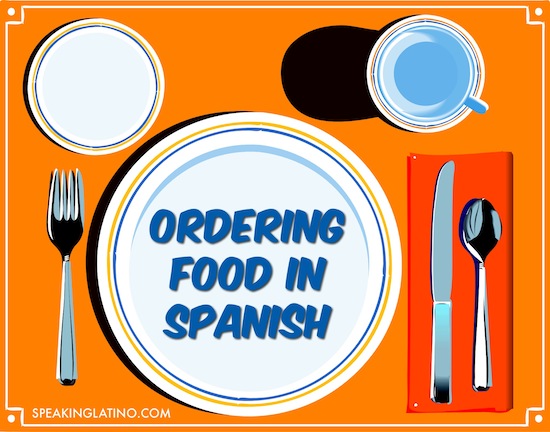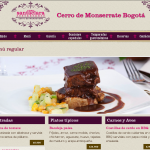
It’s pretty hard to get around in a Spanish speaking country if you can’t even order something to eat. This basic Spanish lesson will give you the vocabulary and phrases you need to order food in Spanish.
First, let’s get your basic food vocabulary out of the way. You have to get past the menu before you get to the waiter!
Basic Spanish Lessons: Ordering Food
The word carne can be translated as a general term for “meat.” So, you might see carne as a section on the menu. However, if carne is listed as a type of meat, it generally refers to beef.
Here are a few more types of meat:
1. pork: puerco, cerdo, lechón
2. chicken: pollo
3. turkey: pavo
4. fish: pescado
5. ham: jamón
Note for vegetarians: Many Latin American countries will interpret “vegetarian” to mean you don’t eat red meat, so you might end up getting a dish with chicken or fish even after specifying you want a vegetarian meal. To be on the safe side you might want to say something along the lines of, “Soy vegetariano, no como ningun tipo de animal.” (I’m a vegetarian, I don’t eat any type of animal.)
Let’s move on to some side dishes:
1. fries: papas fritas*
2. chips: papitas*
3. potatoes: papas
*Usually fries and chips are distinguishable by saying papas fritas versus papitas, but this doesn’t always apply. Just be prepared for either, and you won’t be disappointed.
4. vegetables: verduras, vegetales
5. rice: arroz
6. salad: ensalada**
**I found out the hard way that the Latin American definition of a salad does not always coincide with a North American idea of a salad. If you see something like ensalada de zanahorias (carrot salad) you may very well get just a bowl of shredded carrots. A salad could be basically any cold vegetable. You might want to scope out the other tables before ordering to see what to expect.
Now for beverages:
1. soda: refresco, gaseosa, soda
2. juice: jugo
3. wine: vino
4. red wine: vino tinto
5. white wine: vino blanco
6. beer: cerveza
7. water: agua*
*In some countries, such as Argentina, you might have to choose between agua con gas (sparkling water) or agua sin gas (regular water).
Talking to the waiter
You don’t have to chat the waiter up, but it would be nice to be able to do more than announce your entree or point at the menu. These phrases will help smooth out your exchange
1. Quiero…. (I want….)
2. Me gustaría… (I would like….)
3. ¿Me trae….? (Could you bring me…..)
4. La cuenta, por favor. (The check, please.)
5. ¿Hay algún plato especial hoy? (Is there a special today?)
Obviously, pointing to the menu will usually do the trick in most restaurants, but you are then taking the risk of getting a dish you didn’t want, plus you look like a tourist who refuses to learn the local language. Learning just a few phrases will go a long way when it comes to ordering food in a restaurant.
How to make a class activity for this Spanish lesson: Colombian restaurant Casa Santa Clara menu
 Here is an idea on how you can make a class activity out of this. Go online and find one or two restaurant menus in Spanish only for download. Finding the right one can be hard, because many may be too advanced for your students or in dual language. The Colombian restaurant Casa Santa Clara online menu is a good example of what you are looking for. It is clearly divided along the sections discussed above as well as including more sections (entrees, meat, fish, drinks, desserts, etc.) and its fully in Spanish.
Here is an idea on how you can make a class activity out of this. Go online and find one or two restaurant menus in Spanish only for download. Finding the right one can be hard, because many may be too advanced for your students or in dual language. The Colombian restaurant Casa Santa Clara online menu is a good example of what you are looking for. It is clearly divided along the sections discussed above as well as including more sections (entrees, meat, fish, drinks, desserts, etc.) and its fully in Spanish.
You can also switch to the English version and have the exact same menu on a different sheet just in case you need a translation. Hand out the Spanish version of the menu to your students and ask them to place an order.
You can also create your own simple one-page menu if you don’t find what you are looking for.
Check out these other articles about Spanish Lessons.